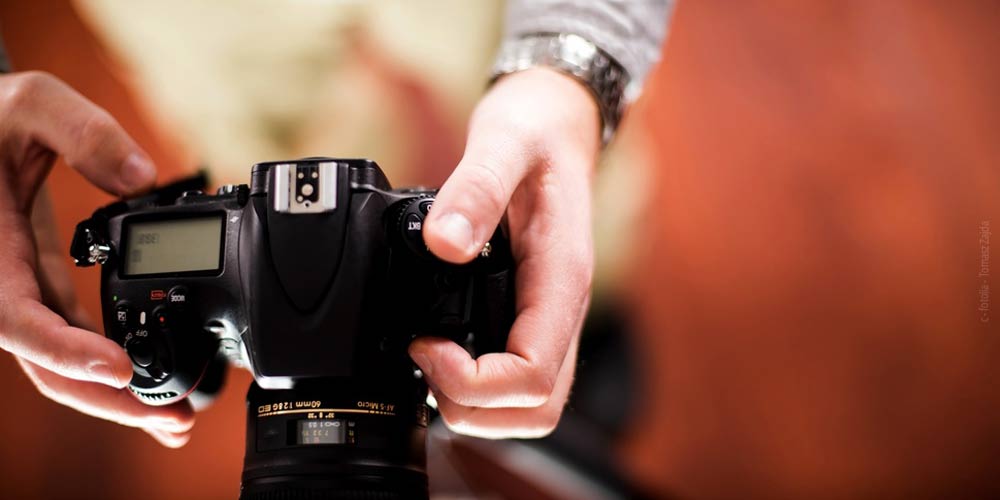Learning to photograph in practice: feelings, emotions, moods
Learning to take pictures in practice – photographers don’t just press the shutter button. Photography is about capturing feelings, emotions and moods. No matter if wedding, fashion photography or even families in the studio. Photography is a craft that you have to learn! If you want to go from being a “hobby photographer” to a professional photographer, you will of course get tired of the “simple snapshot” at some point and want to take better pictures. Good photos do not only show what once was, they transport feelings, emotions, moods. That is what counts. It is a long way to a really good photo. But it is worth it. Here is a first insight into the practice and tools like the rule of thirds (the so-called “golden section”).
Learn photography in theory and practice – especially practice!
Photography is a craft – and like any other craft, photography is best learned by doing it as often as possible. But if you’re really at the very beginning, it can’t hurt to buy a book about photography and read it with your camera in your hand. Such books are available in a more technical orientation and in a more image-oriented orientation. For the beginning we recommend a more technical one, so that you can familiarize yourself with the basic terms like aperture, exposure time, ISO and so on.
After that, it’s a good idea to study your camera’s manual carefully and make the appropriate settings directly on the camera. In this way the technique becomes more and more in your blood and that’s exactly what you want: not to have to think long at the right moment. Like driving a car. Workshops are recommended for practical exercises.
There you can learn directly on the job from very experienced (professional) photographers. There is no better exercise! No book in the world can tell you what a photographer can tell you who stands next to you and looks at your photos immediately. There are workshops for beginners and advanced, for architecture and wildlife, for nature and city, portraits, in short, for everything that can be photographed.
Photography to read
You don’t know which book to start practicing with? Need someone to motivate you? Benjamin’s book is a great introduction to the world of photography. You will find texts and pictures on every topic. After a long time as an amateur photographer, one would like to get an insight into the world of professionals. Not only color and light are important to take beautiful photos, also the technique of the camera itself, is a component of photography. Benjamin manages to package a complicated photographer’s knowledge pleasantly. Look at it!
Learning with motifs and image design
You probably don’t want to learn to take pictures for fun, but because you are particularly interested in certain topics and want to portray them photographically. If not already done, find such a theme and practice finding and photographing exactly the motifs you want. As I said, there are numerous books about image design; it is worth reading a few of them.
Even though nothing is more instructive than your own experience, you can still be instructed by others. It doesn’t hurt to know which image compositions work and which ones don’t from the outset. And then you go. Looking for your own motives, your own way of dealing with them, your own way of approaching the subject: Your own style. For example, divide your motifs according to the rule of thirds.
The rule of thirds
This means, divide it vertically and horizontally into three equal parts (9 equal squares in total) and place the main motif at one of the dividing lines. In this context, it also makes sense to learn something about the so-called golden ratio. Change the camera perspective, play with the light (a photo doesn’t always have to be correctly exposed!), steer the viewer’s gaze with the depth of field or think of something else that expresses yourself. Nothing can replace your own style! In the beginning there is always imitation, no question. But at some point your inner self must appear in the photo – and only yours!
Take a close look at your photos at the end of the day. There may also be some time between the recording and the critical examination. Take a look at your photos and write down what you think is good and what you think is bad (and why). Look at the metadata of your photos. What focal length did you use, what aperture, and so on? Be critical with yourself and do it better next time – but don’t exaggerate. Mozart also had to learn how to compose first!
If you are at the very beginning, read books about the physics and technique of photography. Then read the camera manual and follow the reading directly at the camera. Workshops are a very good opportunity to put theoretical knowledge into practice. You’ll realize why you want to take pictures. And then practice!









